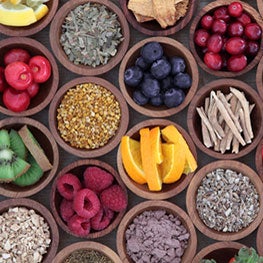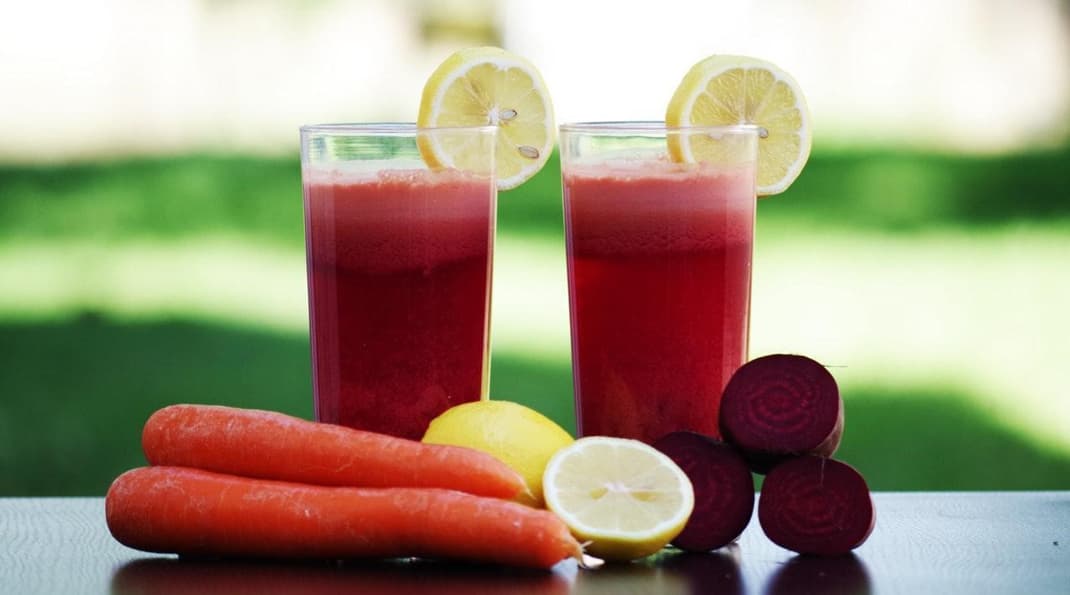Everything You Need To Know About Dietary Fibre

Fibre — we all know it’s important and that we should probably eat more of it, but what exactly is it? And why is it so good for us?
If you want to find out more about dietary fibre, you’ve come to the right place. In this guide, we’ve covered everything you need to know about dietary fibre — from why fibre is important, to different types of dietary fibre, to how you can increase your fibre intake and what that looks like in a meal plan.
What is dietary fibre?
Dietary fibre comes from the parts of plants that your body can’t digest. This means that the digestive enzymes in your body cannot break it down and turn it into energy. Fibre passes through the body without being absorbed or digested, providing us with lots of health benefits, especially for digestive health.
Fibre is found in plant-based food, such as wholegrain breads, cereals, and pasta in addition to brown rice. Other sources of fibre include fruits, vegetables, and legumes like beans and lentils. In fact, there are many different sources you can get dietary fibre from, but most of us still don’t eat enough of it!
The importance of dietary fibre
Fibre is an important part of any balanced, healthy diet.
Dietary fibre plays a number of roles in the body which include:
- Supports healthy bowel function
- Helps to control cholesterol
- Helps to control blood glucose levels
- May support a healthy weight by providing fullness
Below we discuss some of the health benefits of dietary fibre in greater detail.
Fibre and cholesterol
A high fibre diet has been linked to reducing blood cholesterol levels. If cholesterol levels are too high, arteries may become blocked, which can result in coronary heart disease.
Soluble fibre helps by reducing the absorption of cholesterol into your bloodstream — binding with cholesterol in the intestines and removing it from your system.
Fibre and blood glucose
Having a diet rich in fibre can help control and reduce our blood glucose levels. Soluble fibre, in particular, helps to slow the absorption of glucose (sugars) into the body, and regulate blood glucose levels.
How much dietary fibre per day do you need?
It’s important to ensure that you are getting enough fibre to receive the benefits, but how much dietary fibre per day do you need?
Most adults in Australia don’t have enough fibre in their diet, with people generally only eating around 20 grams a day1.
Generally speaking, for adults, the recommended daily intake of dietary fibre is:
- 30 grams for men
- 25 grams for women2
Children under the age of 14 don't need as much fibre in their diet as adults and older teenagers, but they still need around 20-24 grams of fibre a day, depending on their age3.
Dietary fibre types: soluble vs insoluble fibre
There are two basic types of dietary fibre — soluble and insoluble.
These different kinds of fibre both play an important role in your body:
- Soluble fibre: this binds with water to form a gel-like substance in the digestive system, helping to soften stool and support the digestive process. Soluble fibre can help to regulate blood glucose levels and lower blood cholesterol levels. Soluble fibre can be found in oats, beans, peas, carrots, soy products and citrus fruits.
- Insoluble fibre: this type of fibre doesn’t absorb water. Instead, it bulks out stool and promotes movement through the digestive system, supporting its function. Insoluble fibre can be found in wholegrain foods, bran, nuts and seeds, green beans, potatoes and the skins of fruit and vegetables.
Both dietary fibre types are equally beneficial to us, so it isn’t necessarily a case of deciding between soluble and insoluble fibre, because both help support the digestive system.
Following a high fibre diet plan with a good balance of dietary fibre types will help you to experience the benefits of both soluble and insoluble fibre.
What is a high fibre diet?
As the name suggests, a high fibre diet is one in which you eat plenty of fibre-rich foods to ensure that you are reaching your recommended daily intake of fibre.
Typically, a high fibre diet will contain lots of plant-based food, as this is where fibre is found. This means that if you follow a high fibre diet, you’ll find yourself eating more fruit and vegetables, as well as whole-grain breads and cereals, legumes, nuts and seeds.
It is important to get your recommended dose of fibre from a range of different sources. A good high fibre diet will incorporate a variety of fibre-rich foods to ensure you are getting a range of nutrients such as B vitamins, as well as both dietary fibre types (both soluble and insoluble).
How to increase fibre intake
There are all sorts of ways you can increase your dietary fibre intake. This can be achieved in small and simple steps to avoid upsetting your gut. These suggestions include:
- For breakfast, choose a high-fibre cereal, such as oats, bran or multigrain flakes. Multigrain or multiseed bread is also another option that can be enjoyed with eggs, cheese, or a nut spread.
- Try swapping white pasta for a wholegrain alternative such as pulse pasta or wholemeal pasta, or white rice to brown rice.
- Where possible, keep the skins on fruit and vegetables. Most of the fibre found in fruits and vegetables comes from the skin, so if you’re peeling these before you eat them, you’re throwing all that goodness in the bin!
- High-fibre snacks such as fruit, vegetables, wholegrain crackers, nuts and seeds are a simple but effective way to add more fibre into your diet. Try and consume at least 5 colourful vegetables and 2 fruits each day.
- Add legumes such as chickpeas and lentils to main dishes such as curries, soups, salads, casseroles or stews.
- Make a smoothie that contains fruit and vegetables such as berries and spinach.
Pick a few easy changes to make. Once you’ve been following your new fibre diet plan for a little while, you can start making other changes.
It’s also important to remember to drink plenty of water — especially when you are increasing your dietary fibre intake or following a high fibre diet plan.
If you don’t drink enough water, you may experience some discomfort and constipation due to the amount of fibre in your system. Increasing your fluid levels at the same time will help you to avoid these problems.
Making a high fibre diet plan
Making a high fibre diet plan and mapping out what you’re going to eat during the week can help you meet the dietary fibre daily recommended intake.
Make sure that you vary the meals within your high fibre diet so that you’ve got a range of dietary fibre types in there, as well as the nutrients your body needs to stay healthy.
For breakfast, this could look like:
- Day 1: Two slices of wholemeal toast, topped with peanut butter and a sliced banana
- Day 2: Bran or oats with milk, prunes and flaked almonds
- Day 3: Oats topped with chia seeds, milk, banana and honey
- Day 4: Greek yoghurt topped with flax meal, raspberries, blueberries and strawberries
- Day 5: Poached egg and avocado on wholegrain toast with spinach and tomato
It’s up to you how you create your high fibre diet plan — so have some fun and try to incorporate lots of different food types!
High fibre foods
There are lots of different sources of fibre that you can incorporate into a high fibre diet plan, but some contain more fibre than others. Generally, a food is considered “high fibre” if it contains at least four grams of dietary fibre per serving.
Here are examples of the dietary fibre levels in some high fibre foods:
- Raspberries: 5.6g per 100g
- Seeded bread: 9.3g per 100g
- Wheat bran: 41.8g per 100g
- Avocado: 7.5g per 100g
- Globe artichoke (cooked, drained): 9.5g per 100g
- Lentils (cooked, drained): 4.1g per 100g
- Kidney beans (cooked, drained): 7.2g per 100g
- Chickpeas (cooked, drained): 7.6g per 100g
- Almonds (raw, unsalted): 10.9g per 100g
- Pistachios (raw, unsalted): 9g per 100g
- Walnuts (raw, unsalted): 6.4g per 100g
- Sunflower seeds: 13g per 100g
- Chia seeds (dry): 33g per 100g
- Rolled oats (uncooked): 9.5 per 100g
As you can see, there are lots of different types of high fibre foods, ranging from fruit and vegetables, to legumes, nuts and seeds.
You can integrate these high fibre foods into meals or tuck into them as nutritious snacks. Even a small handful of nuts can give you over 3 grams of fibre (just beware — they’re also high in calories!).
Nutritional supplements
If you’re struggling with getting enough fibre into your diet or making a high fibre diet plan, you can use nutritional supplements. Some specially formulated nutritional supplements can help you achieve your daily recommended fibre intake.
There are lots of ways to fit extra fibre into your diet — from adding it to smoothies and milkshakes, to making protein bars, pancakes or muffins. Head to our recipes section to discover a range of easy-to-make and tasty snack and meal ideas.
1 Nutrients. 2018 May; 10(5): 599. Dietary Fibre Intake in Australia. Paper I: Associations with Demographic, Socio-Economic, and Anthropometric Factors.
2 Nutrient Reference Values for Australia and New Zealand Including Recommended Dietary Intakes | NHMRC
3 Nutrient Reference Values for Australia and New Zealand Including Recommended Dietary Intakes | NHMRC
Sources
- Nutrients. 2018 May; 10(5): 599. Dietary Fibre Intake in Australia. Paper I: Associations with Demographic, Socio-Economic, and Anthropometric Factors. Available from: https://pubmed.ncbi.nlm.nih.gov/29751656/
- Nutrient Reference Values for Australia and New Zealand Including Recommended Dietary Intakes | NHMRC (2006). Available from: https://www.nhmrc.gov.au/about-us/publications/nutrient-reference-values-australia-and-new-zealand-including-recommended-dietary-intakes#block-views-block-file-attachments-content-block-1
- https://www.foodstandards.gov.au/science/monitoringnutrients/afcd/pages/default.aspx#
- https://www.ncbi.nlm.nih.gov/pmc/articles/PMC5986479/
- https://www.healthdirect.gov.au/high-fibre-foods-and-diet
- https://www.betterhealth.vic.gov.au/health/healthyliving/fibre-in-food




